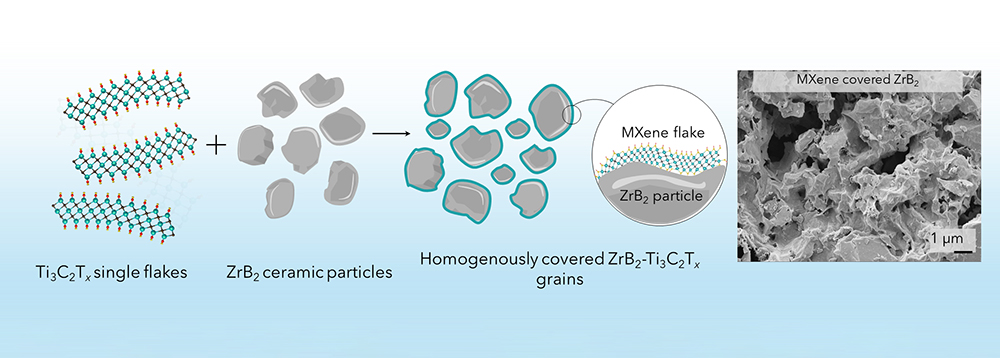
[Image above] Credit: visuals; Unsplash
Across the world, the COVID-19 pandemic rages on.
The SARS-CoV-2 virus isn’t magically disappearing, and with cases once again on the rise in many locations, it looks like this new reality of shutdowns and stay-at-home orders is going to continue for much longer than most of us originally anticipated.
With that in mind, I was recently shopping online for reusable cloth face masks that I can wear when I must to go out in public, in accordance with CDC guidelines.
There is no shortage of options when shopping online for face masks, which are available in an array of colors, patterns, shapes, fits, and materials (even ones reportedly made of glass).
When it comes to face masks that are functional, the gold standard is the N95, so named because its nonwoven polypropylene fibers can filter out an incredible 95% of airborne stuff, including viruses, from the air we breathe.
What makes N95 respirator mask so effective, and what made them originally so revolutionary, is how well they fit—snug enough to filter nearly all the air you breath—yet how breathable they are to wear. Surgical masks are often made of the same material but provide a less snug fit, so they’re generally less efficient than N95 masks.
The nonwoven polypropylene fibers of the material form a tangled web that traps even tiny particles effectively, a property called filter efficiency, yet it contains big enough pores that the wearer can breathe easily.
That breathability factor is measured by the pressure drop, and it’s another important consideration for an effective face mask. If breathing creates a large differential in pressure between the two sides of a mask material, it has a high pressure drop, and breathing is more difficult.

An N95 respirator. Credit: Brian McGowan; Unsplash
But since N95 respirators are being reserved for medical workers, current guidelines indicate that general members of the public like me wear cloth-based masks instead.
So back to my online shopping—despite so many individuals, companies, and businesses offering face masks for sale, I noticed that a large proportion of these products provide little or no information about what material they’re made of, how many layers they contain, or other important factors to help me determine if the masks are actually effective and comfortable to wear.
Many websites are selling masks made of lightweight cotton materials, which while incredibly breathable, have relatively low filter efficiency. They’re better than nothing, but studies seem to indicate they only block about 20% of small particles (study results widely vary here, depending on the type of material, its thickness, and the testing procedures).
Research shows that the material is an important consideration for an effective mask, as not all materials are created equal in both measures—the smaller pore size of high-filter efficiency materials often means they have a high pressure drop and thus are difficult to breathe through.
So it’s an optimal combination of filter efficiency and pressure drop that makes a face mask effective and comfortable. So I was excited to find a study published in Nano Letters in early June that offers more complete data on the performance of an array of common materials.
Using a modified version of the testing protocol used to certify N95 masks,* the researchers compared the performance of a range of household materials, both synthetic and natural—cotton, nylon, polyester, silk, and paper (cellulose)—compared to nonwoven polypropylene, the material of N95 and surgical masks.
*The researchers used a NIOSH protocol that measures aerosolized salt (NaCl) particles with median diameter of 0.075 ± 0.02 μm—the SARS-CoV-2 virus measures about 0.120 μm, but aerosolized particles containing virus that might be inhaled would be larger.
The team measured filter efficiency and pressure drop of the various materials, combining those measures into a single measure called a filtration quality factor—a sort of scoring system to assess how efficient and breathable each material would be as a face mask.
The team’s relatively strict testing criteria showed a perhaps surprisingly low efficiency of nearly all tested materials compared to N95 masks. Even surgical masks, sourced from two different manufacturers, showed relatively low scores.
| Material | Initial filtration efficiency | Initial pressure drop (Pa) | Filter quality factor (k/Pa) |
| Meltblown polypropylene (N95) | 95.94% | 9.0 | 162.7 |
| Meltblown polypropylene (surgical mask 1) | 33.06% | 34.3 | 5.0 |
| Meltblown polypropylene (surgical mask 2) | 18.81% | 16.3 | 5.5 |
| Spunbond polypropylene | 6.15% | 1.6 | 16.9 |
| Cotton, pillow cover | 5.04% | 4.5 | 5.4 |
| Cotton, T-shirt | 21.62% | 14.5 | 7.4 |
| Cotton, sweater | 25.88% | 17.0 | 7.6 |
| Polyester baby wrap | 17.50% | 12.3 | 6.8 |
| Silk napkin | 4.77% | 7.3 | 2.8 |
| Nylon exercise pants | 23.33% | 244.0 | 0.4 |
| Paper towel | 10.41% | 11.0 | 4.3 |
| Tissue paper | 20.2% | 19.0 | 5.1 |
| Copy paper | 99.85% | 1883.6 | 1.5 |
Although most of the materials tested could not compare to the filtration quality of N95 masks—the exception being copy paper, which despite its high efficiency has an incredibly high pressure drop, and it also would not hold up well in the humid environment created by breathing—the results show that many common household materials can be fashioned into face masks that are just as efficient if not more efficient than surgical masks.
And layering multiple different materials together may offer the most effective solution when making your own face mask.
“Cotton, polyester, and polypropylene multilayered structures can meet or even exceed the efficiency of materials used in some medical face masks,” the authors write in the paper. “However, the exact number of layers, basis weight, and thread-count of material will need to be considered in addition to the fluid resistance and performance under breathing.”
(Another paper just accepted by ACS Nano provides more data about different materials, with testing of 32 different fabrics.)
Notably, the team’s results with a spunbond polypropylene fabric commonly found in households had the highest filter quality factor next to N95 masks. “While not as common as cotton, polypropylene spunbond is an inexpensive material that can be found in hobby fabric shops, some reusable bags, mattress covers, hygiene products, and disposable work wear,” the authors write.

Nonwoven polypropylene, like that found in reusable bags. Credit: Piqsels
This material is in the same family of materials used to make N95 and surgical masks—although instead of being spunbond, the materials in N95 and surgical masks are meltblown, a manufacturing difference that results in finer and noncontinuous fibers.
Interestingly, the study also showed that simply rubbing the spunbond polypropylene material for 30 seconds with a latex glove provides enough electrostatic charge on the surface of the material—via the triboelectric effect, the same reason that rubbing a balloon on your head makes your hair stand on end—to essentially double the material’s filtration efficiency for about an hour.
This finding isn’t entirely unexpected, however, as surface charge is another known reason why N95 masks are so effective.
Although the study’s data show relatively low overall filter efficiency for these various household materials, I have to imagine that’s partly attributed to the high bar set by their stringent testing criteria (although the study disclosures do state that several authors have potential competing financial interests via their involvement with a company called 4C Air Inc.).
It’s important to note here that reported filter efficiency and other mask measures widely vary from study to study, depending on the testing protocol and other factors. But despite this variability, it seems like using a tightly woven fabric (hold it up to the light—the more light you can see coming through, the more particles are likely to be able to pass through the fabric as well) and incorporating multiple different materials, combined with a snug fit around your mouth and nose, make for a sufficiently effective mask.
(Northeastern University has been doing their own comprehensive mask testing—see their relatively extensive results for a range of masks types here.)
So it seems like what I can fashion at home with multiple available materials, such as a reusable shopping bag, a layer of sturdy cotton, and perhaps an internal folded facial tissue filter, can work just as well as a standard surgical mask—so I’m abandoning my online shopping cart and making my own mask.
The paper, published in Nano Letters, is “Household materials selection for homemade cloth face coverings and their filtration efficiency enhancement with triboelectric charging” (DOI: 10.1021/acs.nanolett.0c02211).
Author
April Gocha
CTT Categories
- Education
- Nanomaterials


